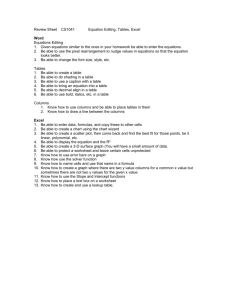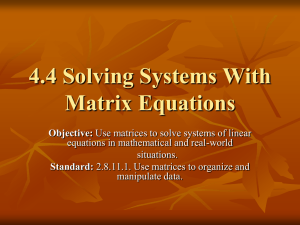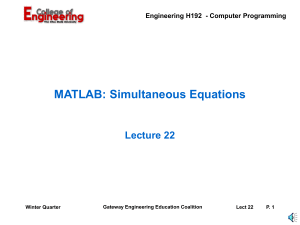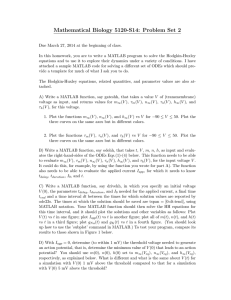Homework 2
advertisement
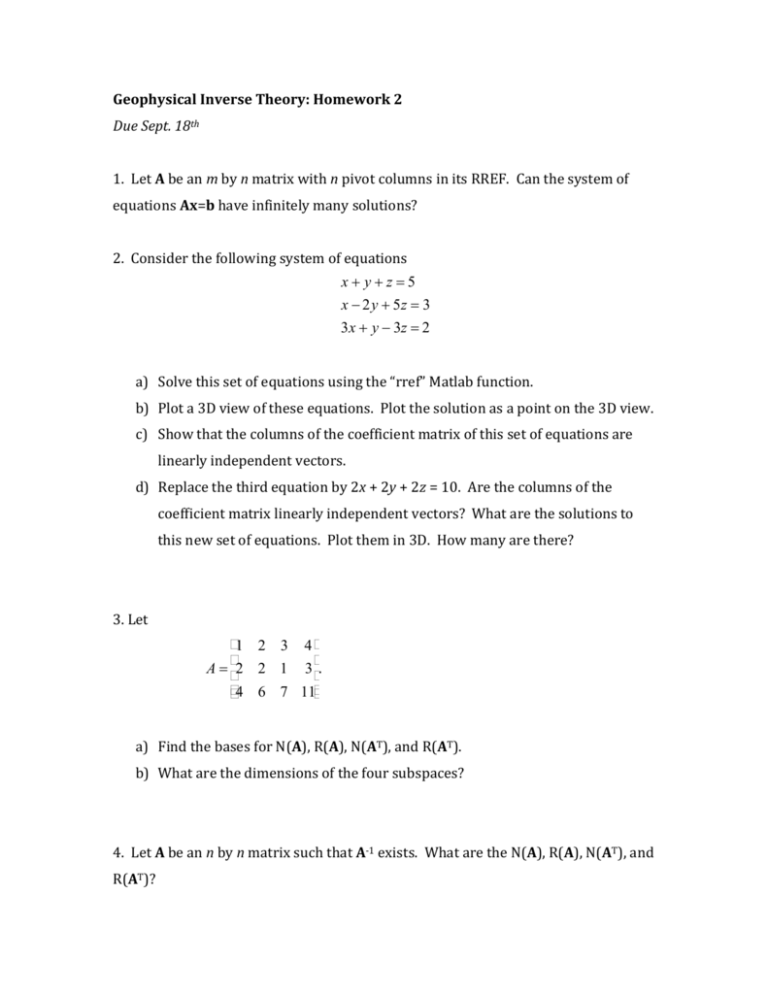
Geophysical Inverse Theory: Homework 2 Due Sept. 18th 1. Let A be an m by n matrix with n pivot columns in its RREF. Can the system of equations Ax=b have infinitely many solutions? 2. Consider the following system of equations x+ y+z=5 x - 2y + 5z = 3 3x + y - 3z = 2 a) Solve this set of equations using the “rref” Matlab function. b) Plot a 3D view of these equations. Plot the solution as a point on the 3D view. c) Show that the columns of the coefficient matrix of this set of equations are linearly independent vectors. d) Replace the third equation by 2x + 2y + 2z = 10. Are the columns of the coefficient matrix linearly independent vectors? What are the solutions to this new set of equations. Plot them in 3D. How many are there? 3. Let é1 2 3 4 ù ê ú A = ê2 2 1 3 ú. êë4 6 7 11úû a) Find the bases for N(A), R(A), N(AT), and R(AT). b) What are the dimensions of the four subspaces? 4. Let A be an n by n matrix such that A-1 exists. What are the N(A), R(A), N(AT), and R(AT)? 5. Suppose that a nonsingular matrix A can be diagonalized as A = PLP-1 Find a diagonalization of A-1. What are the eigenvalues of A-1. 6. Let P3[0,1] be the space of polynomials of degree less than or equal to 3 on the interval [0,1]. The polynomials p1(x)=1, p2(x)=x, p3(x)=x2, and p4(x)=x3 form a basis for P3[0,1], but they are not orthogonal with respect to the inner product f ×g= ò 1 0 f (x)g(x)dx Use the Gram-Schmidt orthogonalization process to construct an orthogonal basis for P3[0,1]. Show your work. 7. Show that the PDF for the sum of two independent uniform random variables on [a,b]=[0,1] is f (x) = 0 (x £ 0) x 2- x 0 (0 £ x £ 1) (1 £ x £ 2) (x ³ 2) 8. Using Matlab, repeat the following experiment 1000 times. Use the randn function to generate a set of 10 normally distributed random numbers with expected value 10.5 and standard deviation 1. Perform a t-test of the hypothesis µ = 10 at the 95% confidence level. How many type II errors were committed? What is the approximate power of the t-test with n = 10 against the alternative hypothesis µ = 10.5? Discuss your results. * Turn in your Matlab codes on Blackboard and the answers to these questions in hardcopy or upload as a pdf on Blackboard.



